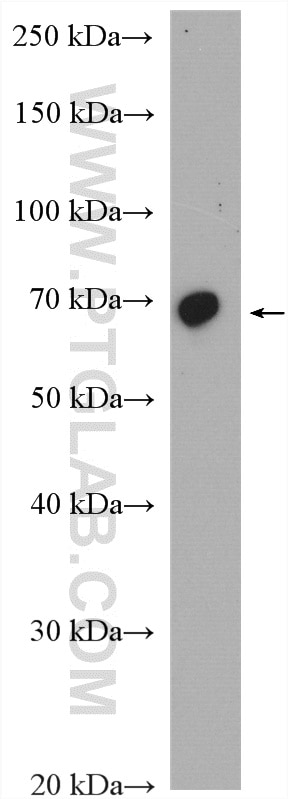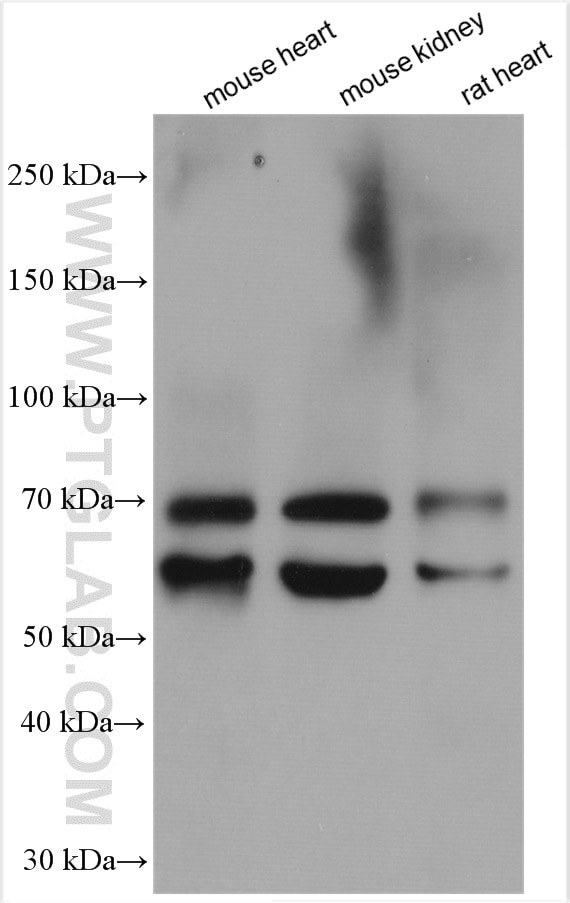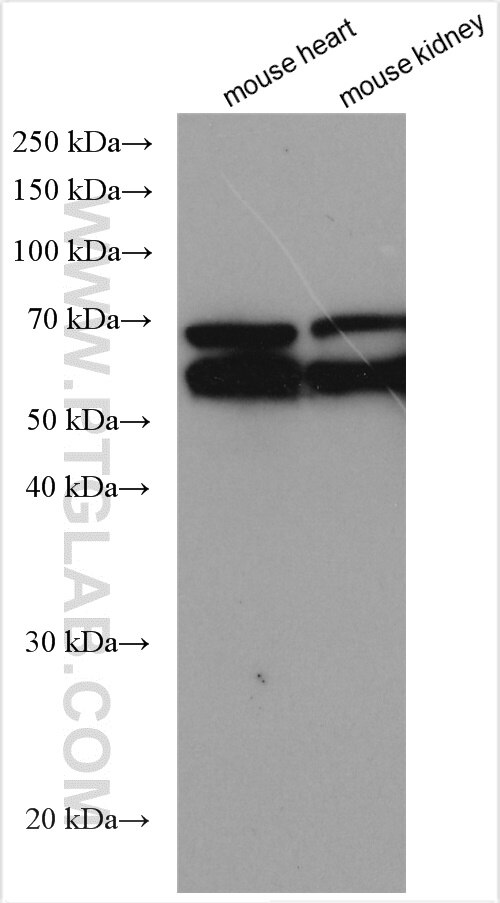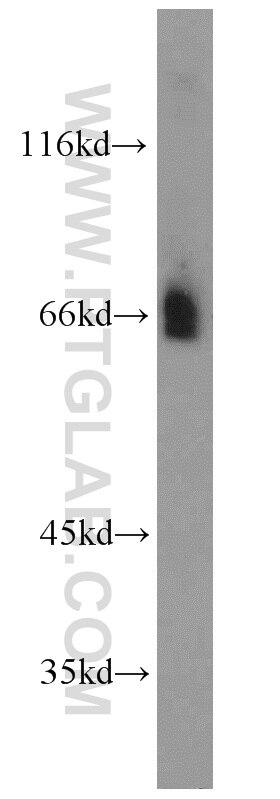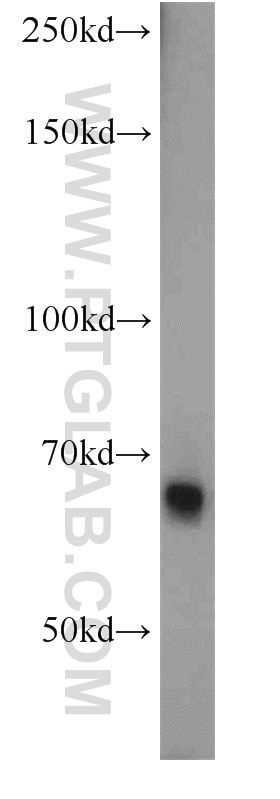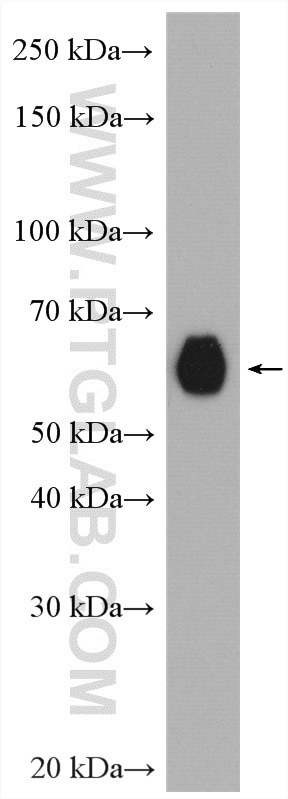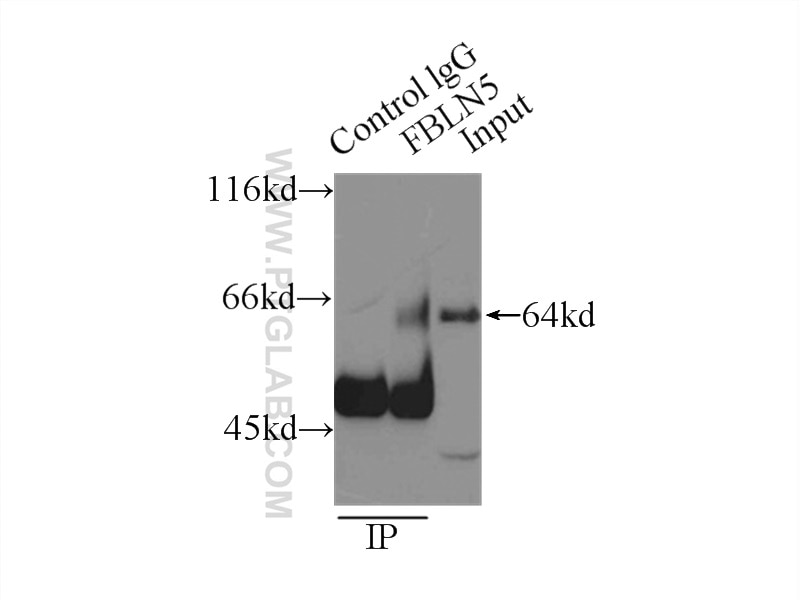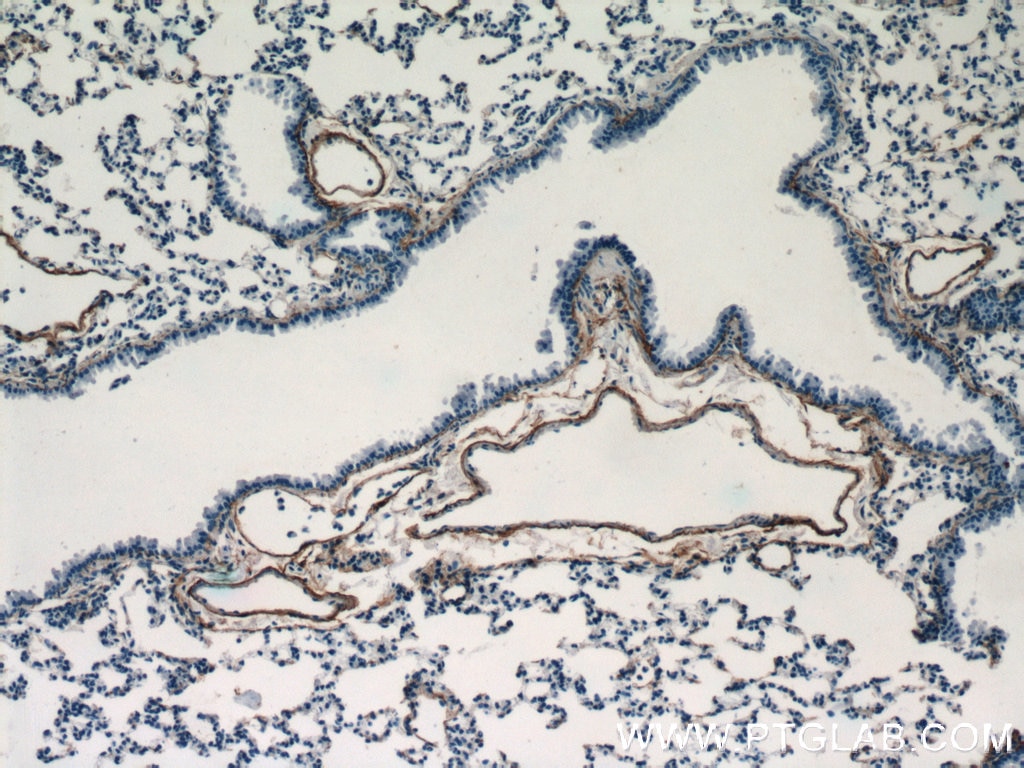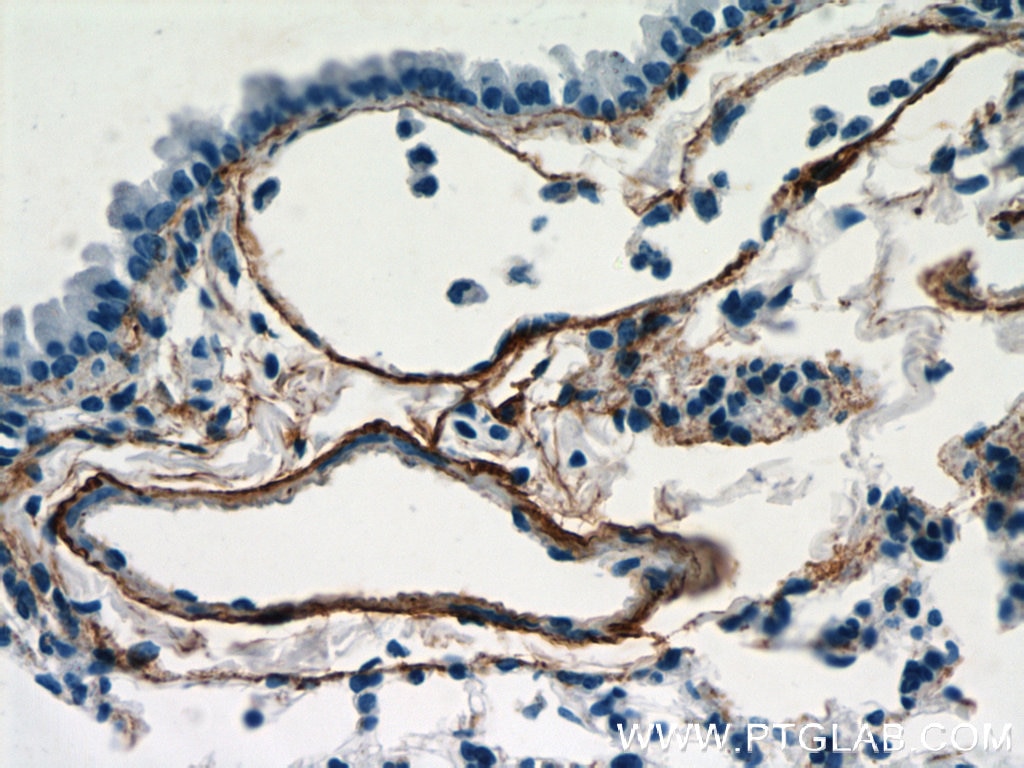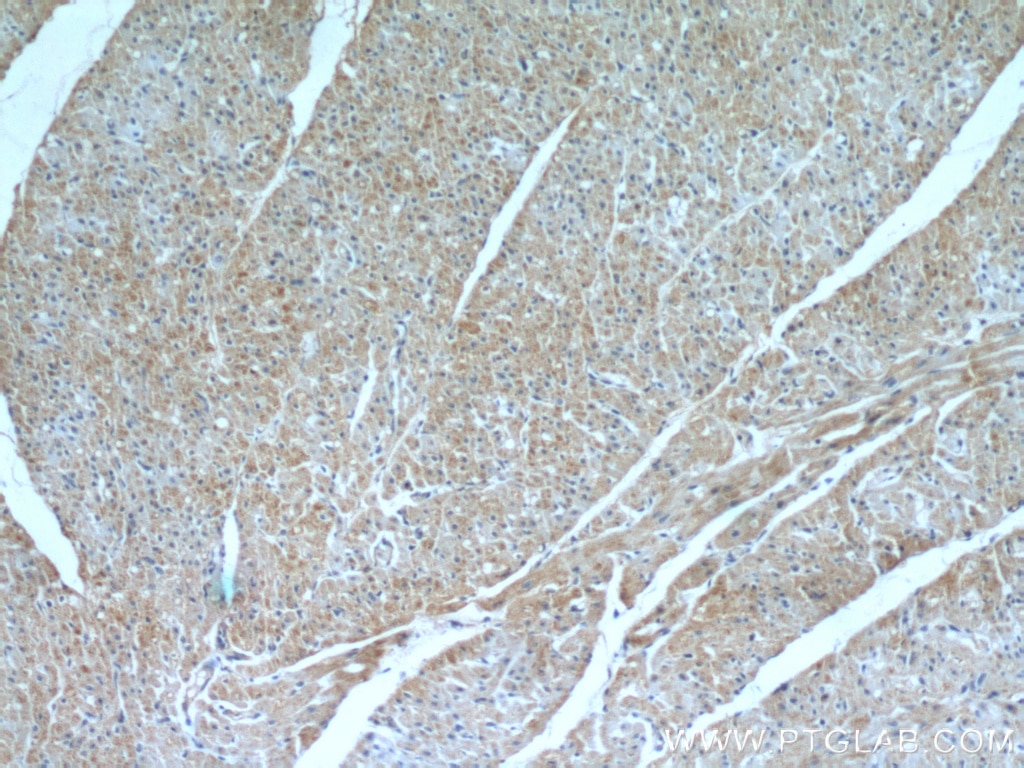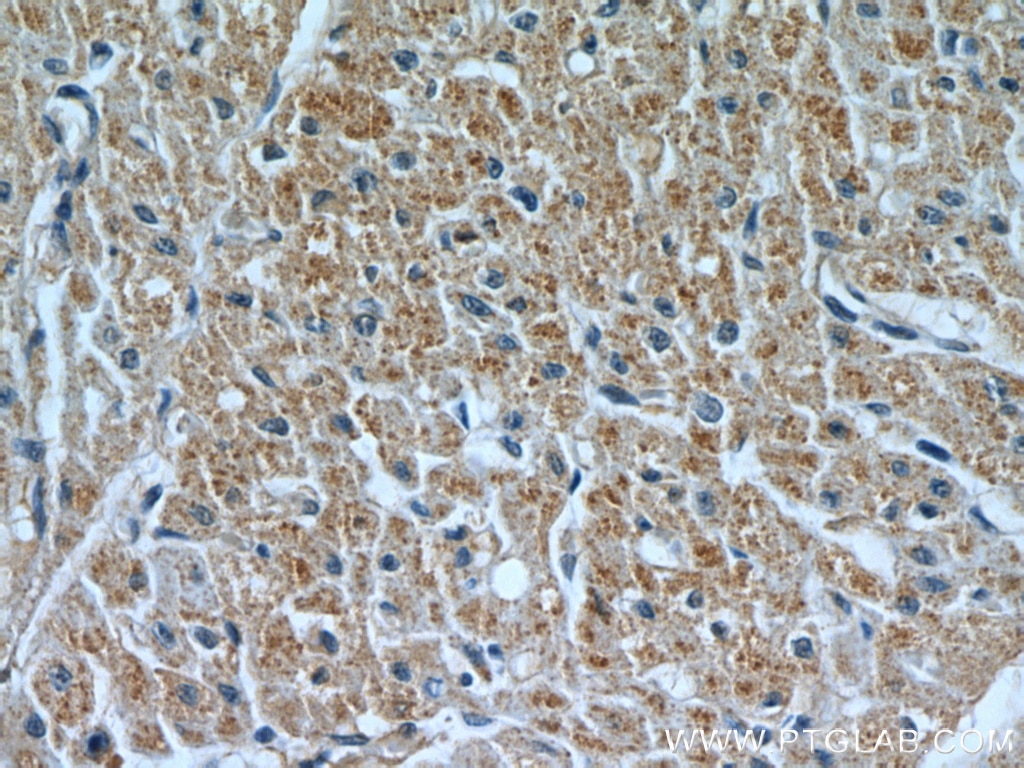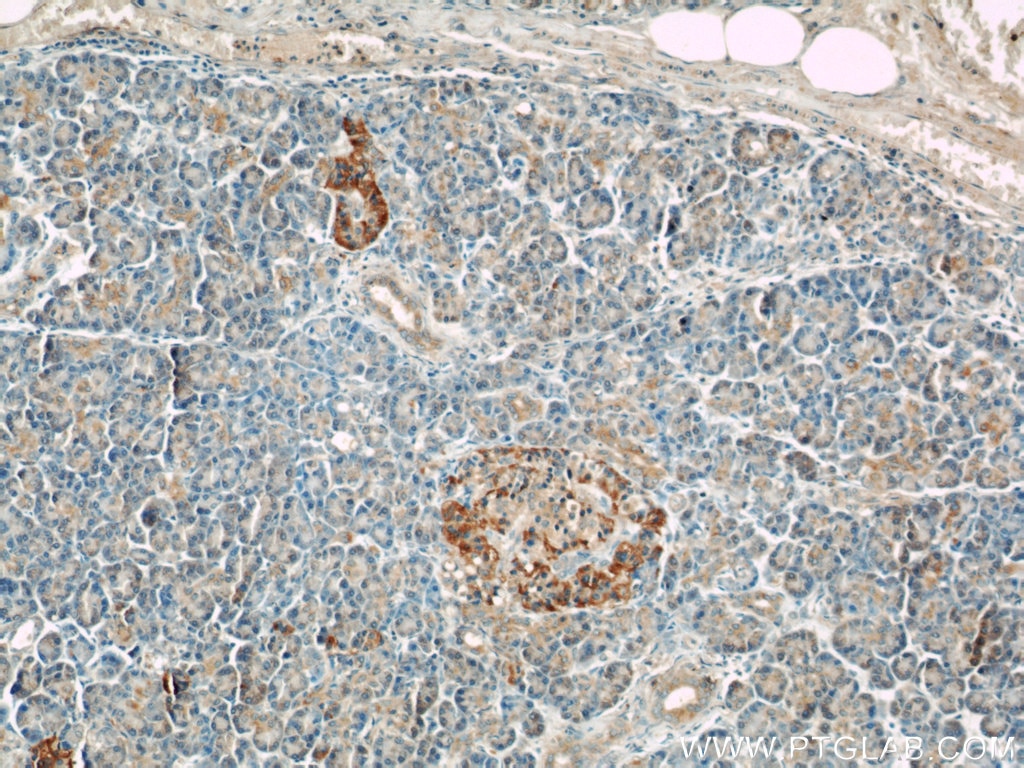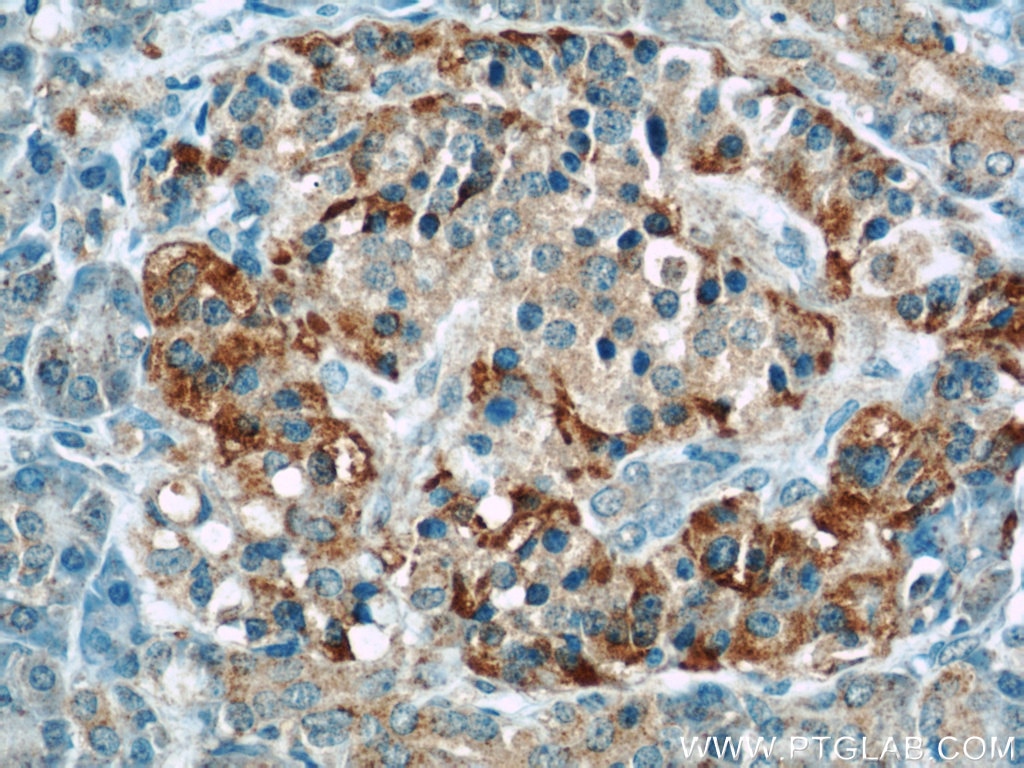- Featured Product
- KD/KO Validated
Fibulin 5 Polyklonaler Antikörper
Fibulin 5 Polyklonal Antikörper für WB, IP, IHC, ELISA
Wirt / Isotyp
Kaninchen / IgG
Getestete Reaktivität
human, Maus, Ratte
Anwendung
WB, IHC, IF, IP, ELISA
Konjugation
Unkonjugiert
Kat-Nr. : 12188-1-AP
Synonyme
Geprüfte Anwendungen
| Erfolgreiche Detektion in WB | Mausherzgewebe, Mausnierengewebe, Maus-Plazenta-Gewebe, Maus-Skelettmuskelgewebe, Rattenhirngewebe, Rattenherzgewebe |
| Erfolgreiche IP | Mausherzgewebe |
| Erfolgreiche Detektion in IHC | Mauslungengewebe, humanes Herzgewebe, humanes Pankreasgewebe Hinweis: Antigendemaskierung mit TE-Puffer pH 9,0 empfohlen. (*) Wahlweise kann die Antigendemaskierung auch mit Citratpuffer pH 6,0 erfolgen. |
Empfohlene Verdünnung
| Anwendung | Verdünnung |
|---|---|
| Western Blot (WB) | WB : 1:1000-1:8000 |
| Immunpräzipitation (IP) | IP : 0.5-4.0 ug for 1.0-3.0 mg of total protein lysate |
| Immunhistochemie (IHC) | IHC : 1:50-1:500 |
| It is recommended that this reagent should be titrated in each testing system to obtain optimal results. | |
| Sample-dependent, check data in validation data gallery | |
Veröffentlichte Anwendungen
| KD/KO | See 1 publications below |
| WB | See 9 publications below |
| IHC | See 2 publications below |
| IF | See 2 publications below |
Produktinformation
12188-1-AP bindet in WB, IHC, IF, IP, ELISA Fibulin 5 und zeigt Reaktivität mit human, Maus, Ratten
| Getestete Reaktivität | human, Maus, Ratte |
| In Publikationen genannte Reaktivität | human, Maus |
| Wirt / Isotyp | Kaninchen / IgG |
| Klonalität | Polyklonal |
| Typ | Antikörper |
| Immunogen | Fibulin 5 fusion protein Ag2859 |
| Vollständiger Name | fibulin 5 |
| Berechnetes Molekulargewicht | 448 aa, 50 kDa |
| Beobachtetes Molekulargewicht | 55 kDa, 65 kDa |
| GenBank-Zugangsnummer | BC022280 |
| Gene symbol | Fibulin 5 |
| Gene ID (NCBI) | 10516 |
| Konjugation | Unkonjugiert |
| Form | Liquid |
| Reinigungsmethode | Antigen-Affinitätsreinigung |
| Lagerungspuffer | PBS with 0.02% sodium azide and 50% glycerol |
| Lagerungsbedingungen | Bei -20°C lagern. Nach dem Versand ein Jahr lang stabil Aliquotieren ist bei -20oC Lagerung nicht notwendig. 20ul Größen enthalten 0,1% BSA. |
Hintergrundinformationen
Fibulin-5, also known as EVEC and DANCE, is a extracellular matrix glycoprotein, secreted by various cell types such as vascular smooth muscle cells, fibroblasts and endothelial cells. Structurally, Fibulin-5 contains an Arg-Gly-Asp (RGD) motif and calcium-binding EGF-like domains. It promotes adhesion of endothelial cells through interaction of integrins and the RGD motif. FBLN5 mutations have been described in patients with age-related macular degeneration, as well as being involved in Charcot-Marie-Tooth neuropathies. This antibody got 50 kDa or 66 kDa band in western blotting, the 66 kDa corresponding to fully glycosylated protein.
Protokolle
| PRODUKTSPEZIFISCHE PROTOKOLLE | |
|---|---|
| WB protocol for Fibulin 5 antibody 12188-1-AP | Protokoll herunterladen |
| IHC protocol for Fibulin 5 antibody 12188-1-AP | Protokoll herunterladenl |
| IP protocol for Fibulin 5 antibody 12188-1-AP | Protokoll herunterladen |
| STANDARD-PROTOKOLLE | |
|---|---|
| Klicken Sie hier, um unsere Standardprotokolle anzuzeigen |
Publikationen
| Species | Application | Title |
|---|---|---|
Arterioscler Thromb Vasc Biol Increased aortic stiffness and attenuated lysyl oxidase activity in obesity. | ||
J Biomed Sci PPARγ activation improves the microenvironment of perivascular adipose tissue and attenuates aortic stiffening in obesity. | ||
Biochem J Fibulin-5 binds urokinase-type plasminogen activator and mediates urokinase-stimulated β1-integrin-dependent cell migration. | ||
Cell Tissue Res Aberrant elastin remodeling in the lungs of O2-exposed newborn mice; primarily results from perturbed interaction between integrins and elastin. | ||
Am J Physiol Cell Physiol Caveolin-1 stabilizes ATP7A, Cu transporter for Extracellular SOD, in Vascular Tissue to Maintain Endothelial Function. | ||
Clin Exp Pharmacol Physiol Limb remote ischemic postconditioning-induced elevation of fibulin-5 confers neuroprotection to rats with cerebral ischemia/reperfusion injury: activation of the AKT pathway.
|
